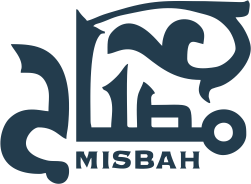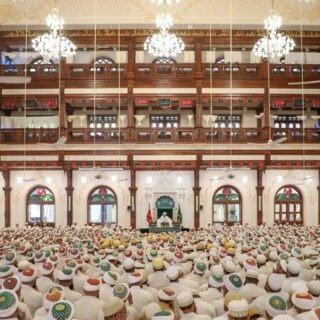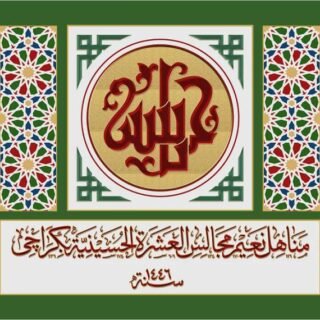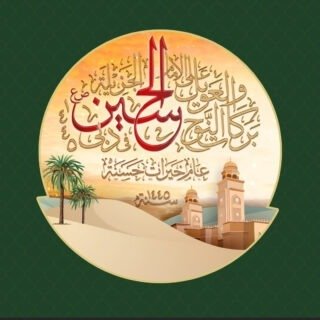There are just too many emotions that are associated with Ashara Mubaraka. There are so many layers of thoughts, sentiments, and musings that garb one single motive – to do the buka and matam of Imam Husain AS in ways that make Mufaddal Moula TUS proud of our efforts.
And because Ashara and the shahadat of Imam Husain AS is the nucleus and core of everything that we as Mumineen understand, believe, and do, it is essential that its beckoning solidifies the foundation of our being and clears the mind and soul of all other associations.
The importance of Ohbat
Until a few years ago, most of us thought that we were ready for Ashara. That we knew what it entailed and meant. But when Mufaddal Moula TUS began the practice of Ashara Ohbat, little did we know that, we were in fact clueless. We had no idea what it truly meant to prepare our souls to feel the magnanimity and gratitude of Imam Husain’s AS sacrifice. We didn’t know how to develop our thoughts and focus our minds to be ready for the force and abundance of ilm and barakat that flowed from Moula TUS to us.
What does it mean to be a part of the esteemed Ashara majalis? And what emotions and thoughts should keep us humbled and prepared for it? All this and much more is what Ashara Ohbat has taught Mumineen over the years. However, the recent bayan of Aqa Moula Mufaddal Saifuddin TUS on the urs mubarak eve of Syedna Abduttaiyeb Zakiyuddin RA and Syedna Abdeali Saifuddin RA sums it all up beautifully. Whether it is the big and small details or the obvious and obscure elements, each was addressed by Moula TUS in the simplest and most clear ways.
Rojo Biradar Hussain ne Rojo
Preparing oneself for Ashara is multifaceted. First, the basic preparedness is to cultivate the deep sorrow for the immense hardships that Imam Husain AS his Ahle Bait and Ashaab suffered in Karbala. The long days after shahadat, the arduous journey of Imam Ali Zainulabedin, Moulatona Zainab, Moulatona UmmeKulsum, and others are as much a part of Ashara, as are the shahadats of the Panjatan that preceded the events in Karbala. From 2nd Moharram when Imam Husain’s AS horse halted in Karbala to the 7th when food and water were denied to him and his haram to the 10th or Ashura which witnessed 72 martyrdoms that culminated in the shahadat of Imam Husain AS, each of these days are not just poignant remembrances of history. They are in fact, emotions that are interwoven in our very being. And hence, with Ohbat majalis at homes and in masjids, the sorrows of Karbala reverberate, laying the solid foundation on which the actual days of Ashara root themselves, only to grow in to buka, matam, noha and aweel, bringing upon us a rainfall of tears. For it is but that one tear, that will make space for us mere mortals in jannat.
Chalo ae pyara azizo chalo
Ohbat also sets in motion the making of various arrangements. It means taking leave from school, college, office, or business to completely concentrate and invest our entire energies in the talaqqi of waaz and the buka of Imam Hussain AS. It also means making arrangements to reach waaz before time. To try to do Ashara with Aqa Moula TUS and if not then be spiritually and emotionally present, even if physically we are miles away from Him, sitting in our local masjids.
Zikrul Hussain
The Zikr of Imam Hussain AS is limitless. It can be done through marasiyas, noha aweel and matam. But it can also be through relating every single aspect of our lives to Ashara. Again, it is Mufaddal Moula TUS who has shown us this unique path of ohbat. The ohbat is continuous and cyclic and starts from one Ashara to another. To connect every amal and azam of the present and elevate ourselves, with the niyyat of making ourselves worthier for the coming Ashara.
It could be by keeping daari so that during Ashara Mubaraka the faces of Mumineen are radiant with noor. Or it could be learning the language, Lisan al-Dawat to understand not only the shahadat, but also the ilm that is imparted through the waaz. It could also be working hard with the intention of saving enough to do Ashara with Maula TUS, or pray namaz on time to ensure that one reaches the Ashara waaz before time. There are countless ways in which our everyday amals can be connected to the divinity of Ashara. Such an ohbat undoubtedly enriches the soul.
Finally, as the days of Ashara draw near, there is anticipation and deep eagerness. The days of ohbat are now slowly changing into the days that we were preparing for. Ultimately, we all pray that the fruits of our ohbat ripen in the form of a flood of tears upon hearing the shahadat of Imam Husain AS.
It is but the tears that flow when we etch in hearts and minds the image of Mufaddal Moula TUS performing the last sajda of Imam Husain AS. Or when the memory of Burhanuddin Moula RA seated on the takht on Ashura with Mufaddal Moula TUS by his side is vividly recalled. With the strength of these ceaseless prayers from our Moulas over the hundreds of years past, we hope to hear only ‘Ya Hussain’, see only their anguished and tearful faces, and think of only the battlefield of Karbala. But alas, we are not angels. Our minds wander often, and our focus shifts easily. But ohbat helps give direction and a clear sight of our ultimate goal – the aim of shedding tear after tear through all days of Ashara. And ohbat also reminds us of the benevolence and compassion of our Moula TUS, whose repeated duas have and will continue to help us in our noha, aweel and zikar of Imam Husain TUS.
– Written by Tasneem Sariya








